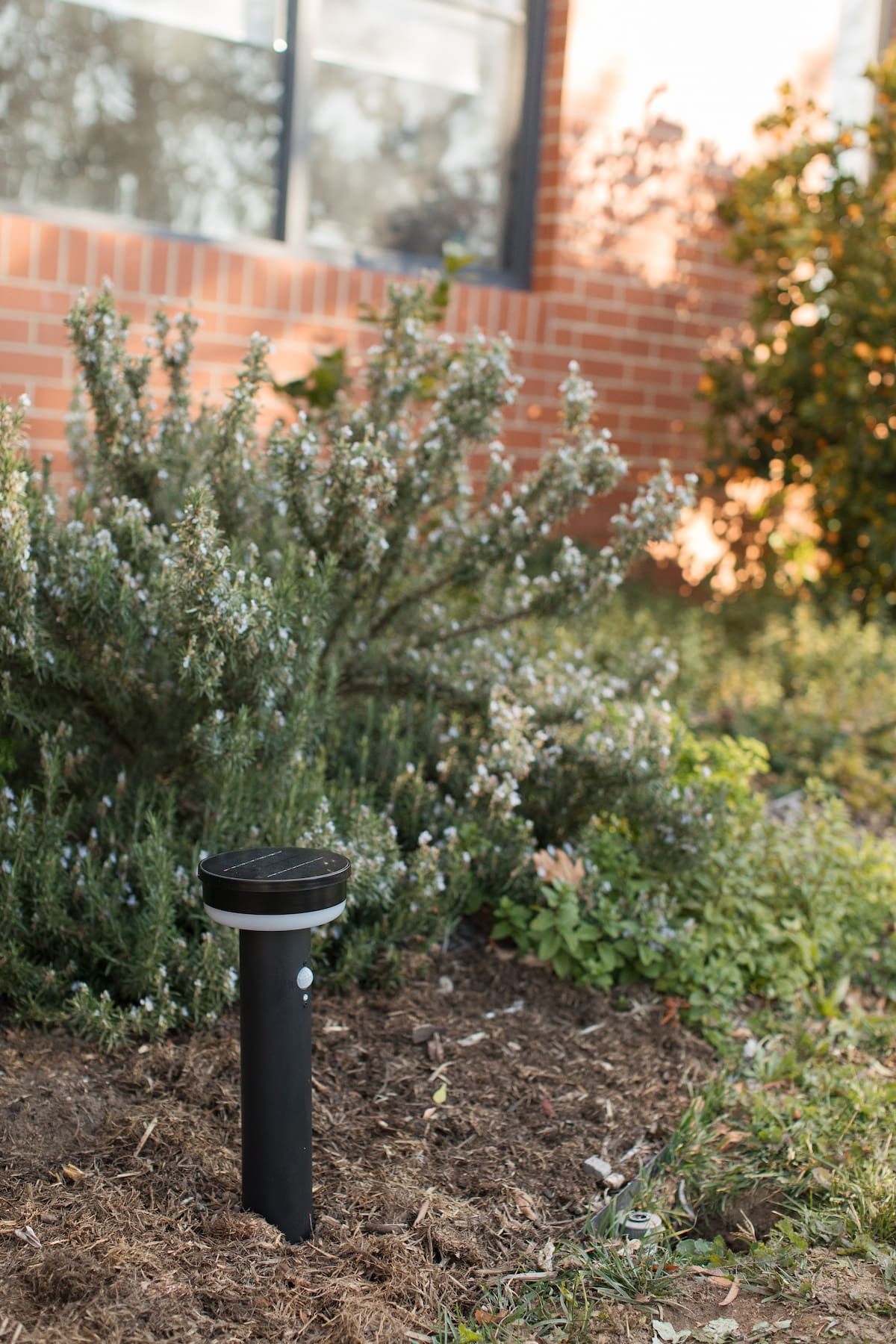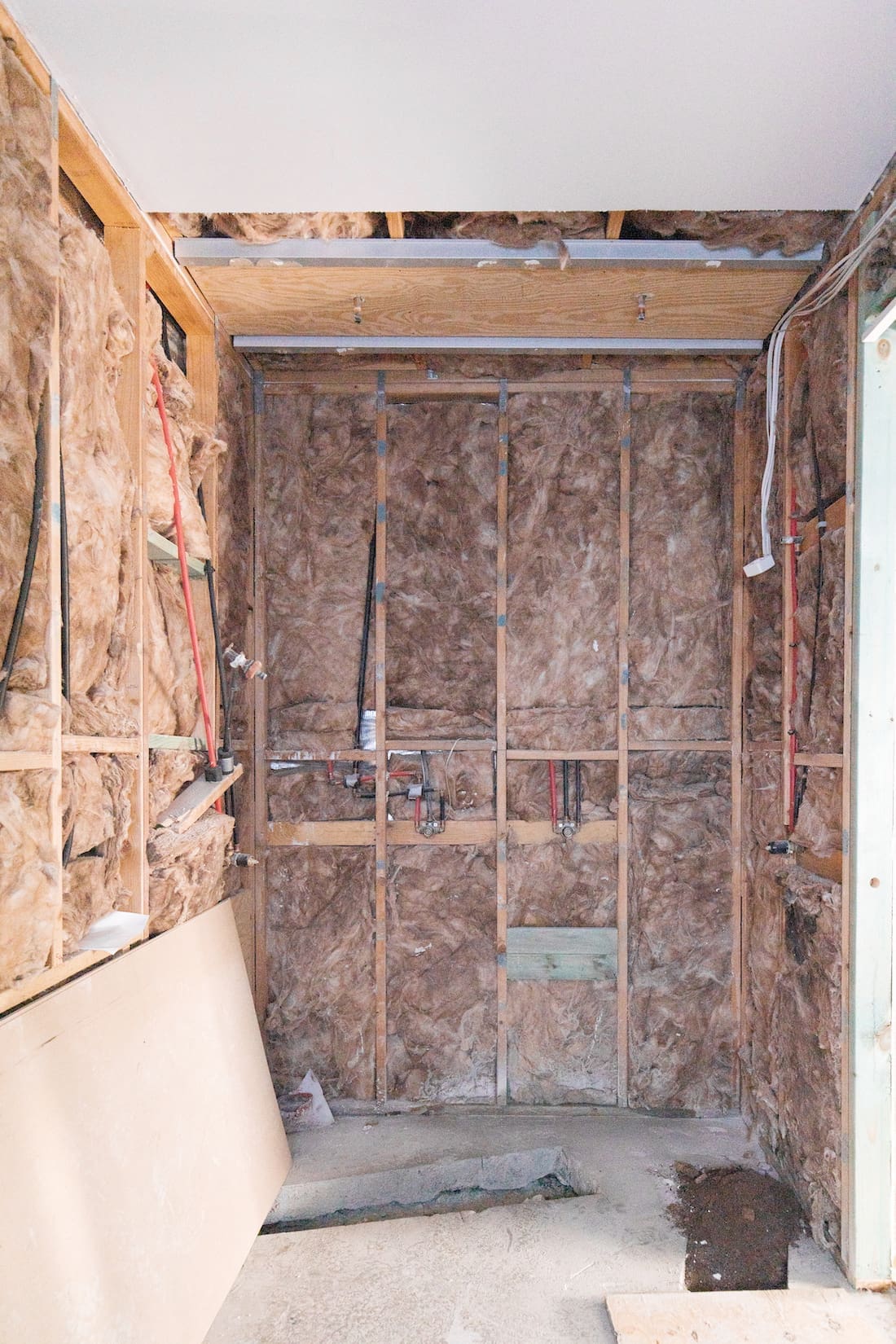In today’s fast-paced world, finding ways to save on the cost of living is more important than ever. From trimming grocery bills to cutting down energy expenses, there are so many ways you can keep more money in your pocket. Here at Style Curator, we understand the importance of smart spending, so we’ve curated a list of over 50 practical tips to help you save at home without sacrificing comfort or style.
Whether you want free ways to reduce costs, like easy swaps, or have budget to invest in things like solar panels that will save you money long term, these are the best ways to save on the cost of living!
Related article: Bougie on a budget: 5 cost-effective home decorating hacks
Related article: 21 easy kitchen cleaning hacks to save time and energy
1. Plan your meals
Creating a weekly meal plan can help you avoid unnecessary trips to the grocery store and reduce food waste. We suggest having a fortnightly plan where your favourite meals can be on rotation, changing up the recipes during summer and winter.
You can take this one step further and also cook in bulk to save additional money, as well as time and mealtime stress. We all know you can easily freeze meals like lasagne and stew, but did you know you can also bake in bulk and freeze muffins and other treats? It’s a great idea for school lunchboxes or unexpected house guests!

2. Shop specials or use coupons and loyalty cards
You know you’re adulting when you’re signed up for the weekly specials at the supermarkets, ha ha. Seriously though, taking advantage of discounted household items and foods — especially when they are 50% off — quickly adds up. If you shop at Coles or Woolworths, swipe your Frequent Flyer or Everyday Rewards card to build up a cash balance that you can use at Christmas time or when other unexpected costs come up.
Many places have loyalty cards or offer coupons where you could save. For example, does your local cafe offer every 10th coffee free? Every small saving to the cost of living adds up to thousands at the end of the year.
3. Buy in bulk
Purchasing items like canned foods, toiletries and other pantry items in bulk can save you money in the long run.
If you don’t have space to stash huge quantities of items in your home, you may like to consider establishing a shopping network. This can take many forms, depending on your friends, family, neighbours or school parents who want to participate. For example, some people start a group where 5 or so people decide to buy certain items in bulk. Each month, one person shops in bulk and everyone pays for their portion. That way, they can take advantage of the cost savings of buying in large quantities but when divided amongst the group are left with a manageable amount of products.
This same concept can be used in many ways to save money around the home. Another idea is when it’s time to mulch your garden beds, ask your neighbours if anyone else wants to buy mulch. That way, you can pay for one large quantity of mulch to be delivered and everyone can save. Win win.

4. Embrace meatless Mondays
One of the more well-known cost of living tips is to cut back on meat, significantly reducing your grocery bill while also benefiting the environment. If you were to swap beef steaks for a vegetarian dish every Monday for a year, for a standard family you could easily save $30 per week… which is over $1,500 a year! Many vegetarian dishes can also be cooked in bulk for additional savings 😉
5. Grow your own herbs
At $5 or more per packet, fresh herbs can be expensive to buy. Thankfully they’re easy to grow at home.
Start with basics like rosemary (loves full sun), thyme and parsley, and over time you can add other popular herbs like basil and chives. If you decide to grow mint, our tip is to put it in a standalone pot or else it will take over your herb garden!
Check out this article on how to start a veggie garden with expert tips from a gardening pro!
6. Shop seasonal produce
It makes sense, shopping produce that’s in season is cheaper than their out-of-season counterparts. Seasonal fruits and vegetables are also fresher and can last longer in the fridge, reducing food waste.

7. Meal prep
Similar to cooking dinners in bulk, you cal also prepare your other meals in advance to save time and money during busy weekdays. For example, why not pick up a few storage boxes or jars so you can make layered fresh salads for a few days where the dressing is at the bottom, salad fill in the middle and leafy greens on top. When it’s time to eat, toss all the ingredients together for a fresh, delicious salad at a fraction of the cost of what you’d buy.
Another favourite idea of ours is to buy a few insulated storage containers for yogurt and berries to overcome those choc’o’clock cravings.
8. Compare prices
Before making a purchase, take the time to compare prices online and in-store to ensure you’re getting the best deal. On a small scale, you could save $20 per week on your groceries… but if you’re buying a large household item like furniture or appliances, you could save hundreds.
9. Repair rather than replace
One of the most effective ways to save is to adopt a mindset of repair rather than replace. Break free from this disposable culture we’re in where as soon as something breaks, it’s thrown away. For example, by undertaking simple repairs or finding reliable services, like clothing alterations near me, you can extend the life of your items.
10. Use cashback sites and apps
We’ll admit, we’re not on this bandwagon yet but these apps have been popular in America for years and are now making their way to Australia. Sites like Shopback and Cash Rewards, let you shop at your favourite participating retailers while getting cash back on purchases. Kickback is the latest addition to the bunch, and I quite like it because of the shopping comparison.
While we’re not encouraging you to go shopping only to save money (our favourite kind of Girl Math), this is an idea to keep up your sleeve when buying birthday or Christmas gifts for others.

11. Buy generic brands
Opting for store brands over name brands can lead to significant savings on everyday items and cut household costs.
Money gurus over at @shesonthemoneyaus recently did a blind taste test to see if fancy brand crackers or Aldi crackers were tastier, and both preferred the Aldi crackers at less than half the price. Making simple swaps like these can help you to save on the basics to reduce the cost of living, or give you a little extra to splurge on the things you really appreciate.
12. Cancel unused subscriptions
Let’s be honest, when was the last time you went line by line through your bank statements? Take a close look for random charges, like mobile apps or other services you no longer use. That $10 or $30 a month is wasted money so review your subscriptions regularly and cancel any you no longer use or need.
13. Negotiate bills
Just a few phone calls could save you hundreds each year. It may be that you’re on a redundant plan and your phone company now offers more competitive rates, or that your service provider would be willing to lower the cost of your plan to keep you as a customer.
You won’t know if you don’t ask so put the question out there!

14. Switch to LED bulbs
This cost-saving tip has been around for a long time but you may still have some lights you haven’t switched over to LED light bulbs. For example, do you have traditional fluorescent lights in your garage, or an old light in your shed? LED bulbs use less energy and last longer than traditional incandescent bulbs, helping you save on your electricity bill.
15. Unplug electronics
Another way to save on electricity bills is to turn off your appliances at the wall when they’re not in use. Appliances and devices continue to draw power even when they’re turned off, so switch them off or unplug them when they’re not in use to save energy.
16. Install a programmable thermostat
A programmable thermostat allows you to set your heating and cooling systems to run more efficiently, reducing energy costs. Pull out the operator manual or google your particular model to find out how you can program it today.
17. Use ceiling fans
Running your aircon 24/7 during the hotter months makes life bearable… but expensive! A cost effective and eco-friendly alternative is to use ceiling fans to circulate air and reduce the need for air conditioning.

18. Seal drafts
Caulk or weatherstrip doors and windows to prevent heat transfer. This will stop cold air from entering your home in winter and hot air in summer. Professional Melbourne caulking ensures windows and doors are sealed effectively, preventing energy loss and keeping your home comfortable. You may have cracks around windows or doors that need filler, and you can also buy foam or bristle strips to put underneath doors.
19. Wash clothes in cold water
Washing clothes in cold water not only saves energy but also helps preserve the colour and quality of your garments. Many washing machines will automatically set the temperature to 40 degrees but with a few extra button pushes, you can run a cold wash and save money!
20. Air dry laundry
Skip the dryer and air dry your clothes instead to save on electricity and extend the life of your clothing. Yes, this can be a pain in winter and may not always be practical. But if it’s habit to run the dryer after every load, we suggest air drying a few loads a week and building up from there.

21. Take shorter showers
Cutting your shower time by just a few minutes can add up to significant water and energy savings over time. According to this Canstar article, you could save $100 a year by reducing your shower from 8 minutes to 4 (based on a family of 4 in 2023).
22. Install low-flow fixtures
Another way to reduce water usage is to replace old shower heads and faucets with low-flow options. All tapware sold in Australia has a WELS rating to let you know the water efficiency of the products you are buying.
23. Use a water tank
On the topic of saving water, do you have a water tank? Using rainwater to water your garden and plants will keep them thriving while saving you money.
24. Insulate your home
Ok, this one is a biggie! Poorly insulated homes can cost a fortune on heating and cooling costs. Create a more comfortable home with better regulated indoor temperatures by improving your home’s insulation. This is a home improvement project you could DIY by buying extra insulation battens or call in the professionals.
For those planning upgrades, a loan for home renovation can provide the necessary funds to complete your dream renovations without straining your budget.

25. Set financial goals
Whether it’s paying off debt or saving for a vacation, setting clear financial goals can help you stay motivated to save. As the saying goes, what you focus on grows.
Having an emotional motivation linked to your saving goal, like picturing that fabulous holiday, will make you want to reach your goals sooner.
26. Create a budget
Another time to get real with yourself — do you have a budget? We mean, do you track your income and expenses to identify areas where you can cut back and save more money. Or are you like most people who just go week by week, trying to save without a big picture view?
There are plenty of free planners, including the Money Smart budget planner, to make budgeting easy!
27. Automate savings
A simple trick we love that adds up is to set up automatic transfers to your savings account. This could be as little as $20 a month. Every bit of savings will ensure you’re consistently putting money away for the future. We also do this for our kids bank accounts, setting aside $10 every month. Many banks offer a kids account with bonus interest, and the compounding effect of these savings over many years will set them up well for the financial future.

28. Use cash for discretionary spending
Withdraw a set amount of cash each week for discretionary expenses like dining out or entertainment to avoid overspending. It’s so easy to tap your card or phone, only to realise you’ve barely got enough to cover the cost of groceries when the end of the week rolls around.
29. DIY home repairs
While we’d never suggest doing your own electrical or plumbing, there are some home repairs that are DIYable. Learn how to tackle minor home repairs and maintenance tasks yourself to save on professional labour costs. For example, you may be able to repaint walls or fix a broken door.
30. Borrow instead of buy
There are so many items you don’t have to buy to enjoy. From borrowing books or movies from the library, to simply asking friends or neighbours to borrow their ladder or tools, you can save big when you get out of the mindset of must always buy.
When you start thinking about borrowing instead of buying, you’ll find more and more ways to do this. Got a fancy event coming up? Rather than spending hundreds on a new dress, a friend may have something gorgeous they are happy for you to borrow. And so it goes on and on…

31. Host potluck dinners
Channel the ways of your parents and host a potluck dinner. Instead of going out to eat with friends, host a dinner where everyone brings a dish to share. They’re so fun and a great way to try new foods, swap recipes, and have instant conversation starters.
If that’s not your vibe, perhaps just inviting friends over for dinner rather than eating at a restaurant can be more enjoyable and cost-effective. More often than not, they’ll want to return the favour.
32. Cut back on alcohol
Limiting your alcohol consumption can save you money on both grocery bills and dining out expenses. If you’re not particularly big on drinking water, simple swaps at home can be iced tea (we brew a large batch and keep it in the fridge), kombucha and tonic or soda water.
If you’d like to go alcohol free but enjoy the taste of wine, check out Altina’s botanical range of zero alcohol wines. They’re getting 5 out of 5 star reviews for good reason!
33. Use public transportation
Not going to lie, this won’t be for everyone! But if possible, take advantage of public transportation or carpooling to save on petrol and parking costs. Did you know Uber also has a carpooling option that’s about half the cost of a regular fare?

34. Bike or walk
Another way to save on parking and petrol is to bike or walk whenever possible. Not only will you save on transportation expenses, you’ll also improve your health while helping the environment. For example, some parents will walk or bike their kids to school some mornings if they live close.
35. Pack lunches
Bringing your lunch to work instead of eating out can save you a significant amount of money over time. Consider our salad idea under meal prep above, or at the very least keep some supplies in your drawers at work.
36. Use free resources
We mentioned borrowing books from the library instead of always buying new but there are other free resources you can take advantage of in your community. For example, recreational facilities and free community events.
At Easter, we went to a mega Easter egg hunt where there were 5000 Cadbury chocolate easter eggs and bunnies, as well as free coffee and breakfast. The kids went wild and had so much fun bumping into friends from school. Keep an eye out for posters in your community and become a member of local Facebook groups to stay in the know.

37. Shop secondhand
Thrift stores, consignment shops, and online marketplaces offer gently used items at a fraction of the cost of new ones.
When it comes to buying furniture, we love browsing thrift stores to see what bargain we can snap up. With so many DIY products and materials readily available, it’s never been easier to turn a basic piece of furniture into something special. Just take a look at this $20 dresser we bought secondhand and transformed using chalk spray paint and new hardware.
38. DIY gifts
The most important part of gift giving is showing the other person you care about them, not the dollar value assigned to the gift! So why not get creative and make homemade gifts for birthdays and holidays instead of purchasing expensive presents? We’ve got plenty of DIY gift ideas here.
39. Practice mindful spending
Sometimes the best way to save on the cost of living is to change your mindset and adopt simple money smart habits. An effective way to save is to pause and consider whether a purchase aligns with your values and priorities before making it. Do I really need this? Will this get me closer to [desired goal]? If the answer is no, it will be easy to walk away without feeling like you’re depriving yourself.

40. Avoid impulse purchases
If practicing mindful spending isn’t working for you, perhaps setting a 24 hour time limit may be another idea to try. Simply wait 24 hours before making non-essential purchases to prevent impulse buying. Tell yourself, If I still want it tomorrow, I’ll buy it then. Chances are you’ll get too busy or it isn’t worth the effort of going back in store, or you’ll realise you don’t actually want or need it.
41. Shop with a list
Lists work. Fact. Whether it’s grocery shopping or buying Christmas gifts for the family, write a list in advance and stick to it. This rule of If it isn’t on the list I won’t buy it will avoid overspending on items you don’t need.
42. Review your credit cards
How much interest are you paying on your credit cards? Do they offer the best rewards and rate for your needs? You may be paying more in interest than you need to if you simply swapped to a different type of card or bank. Or you may be missing out on valuable travel points that could help you get on your dream holiday sooner. Like with all things, it pays to shop around! Sites like Credit Card Compare can make it quick and easy to compare credit cards depending on your use and needs.

43. Refinance your mortgage
A big one for homeowners right now are mortgages! With many people paying twice as much in mortgage repayments than they were a few years ago, it’s never been a better time to explore refinancing options. Some banks offer lower rate for new customers, or your current bank may be willing to lower your interest rate to keep you.
Because this is such a big expense, you may want to consult an expert to guide you. A mortgage broker can help you to navigate and narrow down your options so you can apply for a loan that suits your budget, needs, and circumstances. Consulting with a mortgage broker can be beneficial when calculating mortgage payments, ensuring you understand the financial commitments associated with your chosen loan.
44. Rent out unused space
Saving on the cost of living isn’t just about reducing expenditure but also how you can maximise your income. If you have a granny flat, spare room or even a parking spot, consider renting it out to generate extra income.
Similarly, if you’re lucky enough to have a holiday house that sits empty most of the year, why not make it available on airbnb? As well as generating an income, you’ll be able to claim cleaning and repair costs as tax deductions.
45. Negotiate rent
If you’re renting, try negotiating with your landlord for a lower rent or additional amenities. The last thing your landlord wants in this climate is to have their property sit empty so you may find now is an ideal time to negotiate.

46. Sell items you no longer use
Another easy way of making extra cash is to sell items you no longer use on Facebook marketplace, Gumtree, eBay or similar sites. You can sell anything from gardening tools to kids toys, clothing and kitchenware.
You can do all of this from your mobile so it only takes minutes to snap a few images and post them with a short description and price. As well as earning additional money, it’s a great way to declutter your home.
47. Use energy-efficient appliances
If your energy bills are sky high, it may be that you have an old appliance that’s taking up more energy than it should. Upgrading to energy-efficient appliances will cost more in the short term but can save on electricity and water usage in the long run. For example, upgrading your home’s hot water system can save money long-term while minimising your environmental impact.
Also, if you have a second fridge or freezer, consider if you still need it to be on year-round. Perhaps it made sense at the time but now you could get rid of them or just use them around the festive season.
48. DIY cleaning products
A simple idea we’ve been doing for a few years is to make our own cleaning products. You can make most home cleaning products using simple ingredients like vinegar, baking soda, and lemon juice. Not only will this save on household cleaning expenses, they are chemical-free, reducing the amount of toxins in your home. Find our favourite cleaning tips and tricks with plenty of natural cleaner recipes here.
49. Buy refills
You can justify spending more on products you love when you take advantage of refills. From luxe hand wash to eco-friendly laundry liquid, many brands have become more eco-aware and offer refills. You’ll be doing your bit for the environment by reducing plastics while saving money.
And if your preferred brand doesn’t offer a refill, you could still reuse the vessel and DIY your own product. We have recipes to make your own foaming hand wash, laundry liquid and more in this article 😉
50. Cancel unused memberships
Review your monthly memberships and consider if you still want and need them all. Are you still getting what you want out of Netflix or are you mainly streaming TV on Binge or Stan?
What about your gym membership? Are you sticking to your health goals or has this become something to feel guilty about when you see the deductions come out and realise you haven’t gone?
Review your memberships and other subscriptions regularly and cancel any you no longer use. Guilt free!
51. Invest in reusable items
Switching to reusable items like cloth napkins, water bottles, and beeswax wraps can help you save money and reduce waste over time. Check out this article on ways to reduce plastic around the home for even more ideas.
52. Explore affordable travel options
With travel returning to pre-COVID levels, many of us are eager to explore again — but rising costs can quickly make those trips expensive! If you’re one of the many jumping back into travel, it’s smart to find ways to save without sacrificing the experience. One effective strategy is to explore affordable travel options, such as booking budget-friendly stays or off-season deals for accommodations. For instance, if you’re planning a getaway, look into Forster beach accommodation options that offer discounts for extended stays or mid-week bookings. Additionally, consider cooking your meals instead of dining out, using public transport instead of private vehicles, and leveraging cashback apps for everyday purchases to stretch your budget further.
53. Install solar panels
We’ve mentioned a few ways you can save on the cost of energy, but one of the best ways to reduce your electricity expenses is to install solar panels. By generating your own renewable energy, you decrease reliance on the grid, leading to substantial savings. For instance, a typical Australian household can save up to $400 per year for each kilowatt (kW) of solar installed! While there is an upfront cost to installing solar, there are government incentives and rebates that can help. The long-term savings, as well as environmental benefits, make solar a smart investment.
54. Practice gratitude
Finally, cultivate a mindset of gratitude for what you have rather than constantly striving for more. Not only is this proven to improve happiness, it can also attract even more abundance to you life.
We hope these 50+ tips you can do today help you save on the cost of living and build a more secure financial future for yourself and your family. Do you have other tips to save on the cost of living or generate more income from home? Leave your tips in the comments below!








